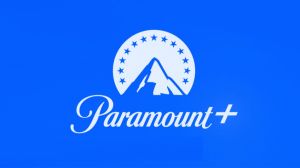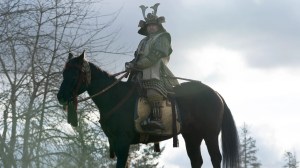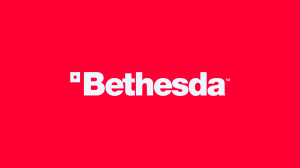In 1982, filmmaker George Romero teamed up with author Stephen king to develop Creepshow, a film which served as an homage to the horror and EC Comics the pair grew up reading in the ’50s, with the film delivering audiences a variety of terrifying tales under the guise that they were each a chapter in one comic book. The stylish adaptation of the concept, combined with campy frights and performances, resulted in an immensely entertaining anthology which is regarded just as highly today as it was when it was released. One of the film’s biggest fans is special effects icon and The Walking Dead director Greg Nicotero, who developed the Creepshow series for Shudder.
Videos by ComicBook.com
Nicotero has a long history with Romero, having worked with him on Day of the Dead, Monkey Shines, and Tales from the Darkside: The Movie. Not only was it important to Nicotero to capture the spirit of the original film, but also of the comics that inspired it, all while offering a contemporary take on the concept. With the first season comprising of a total of 12 separate stories, Creepshow enlisted a number of different artists to contribute their interpretations of each vignette as a way to honor its predecessors.
ComicBook.com recently caught up with Nicotero to talk about the series’ comic book art and his approach to honoring the original film and comic book inspiration.

ComicBook.com: The original film served as an homage to EC Comics, but your show had the difficult task of serving as an homage to something that was already an homage. How did you find that balance of paying tribute to the film, but also embracing the spirit of the original comics?
Greg Nicotero: I always thought that Creepshow was ahead of its time. It’s like you said, Creepshow was Stephen King and George Romero’s tribute to EC Comics and their inspirations. My version of Creepshow is really a tribute to George and Steve. I thought Creepshow was ahead of its time in terms of the visuals. I loved the idea of dissolving from the freeze frame comics into live-action and playing up the comic book colors and the Dutch angles, and it was very different for me than Walking Dead. And I loved the opportunity to tell stories that really didn’t have any rules. I’m a big fan of short horror films. At all the festivals I go to, Fantastic Fest and Scream Fest in L.A. and Sitges and all these places, I met some amazing filmmakers that have done some unbelievable short films.
What’s amazing about it is there are no rules. You don’t have to follow any sort of act structure. You can tell whatever story you want to tell. I was super excited about that aspect of my version of Creepshow. One story could be 12 minutes and one story could be 22 minutes and one story could be 18 minutes. There were really no rules and that takes me back to when the horror movement really started in the late ’60s because between George, Tobe Hooper, Wes Craven, John Carpenter, those guys were all renegade guys that didn’t follow the rules and horror, in general, always has that sort of rebellious nature to it.
And in addition to the filming style resembling comics, you also get to include actual comics in the series itself.
A lot of the covers are tributes to old EC Comics covers. There’s the cover of “The Companion” that was drawn by Mike Broom, which was a tribute to a Jack Davis cover. There was another cover that we did that was a riff on the cover from the movie poster that Neal Adams did for Grizzly, we did a take on that, but it was the Creep behind a bunch of little kids sitting around the campfire reading a comic book. There were a lot of instances where a lot of the comic book art was designed to pay tribute to artists who had actually contributed to those comic books in the ’50s, and you can see it all over the place. There’s so many comics that have that style.
Plus the artists you selected were able to inject their own contemporary take on the style.
I wanted it to feel authentic and real and fun. Even though I used some of the color swatches that they used in the ’50s, I also thought that not everything needed to feel retro. When we first started doing it, we were doing that printed dot pattern on some of the comic book pages and aging the pages so they were a little yellow, and I thought about it and I was like, “No, I don’t want to play that the comic books are old or vintage. I want to play it that these are new stories.” We’re not going with the idea that these are old, yellowed, and creased. After a few pieces of artwork came in, I decided to take those filters off in Photoshop and play them up as if they were new. I liked that better because it makes the show feel a little bit more relevant and not quite such a throwback, even though, of course, it is a bit of a throwback just because of the material.
What was the process of finding the artists to contribute to the series?
When we started and it was Ron Frenz and it was Mike Broom that were doing a lot of the work, there were a lot of other artists that I was pursuing, like Kelley Jones, who had drawn the comic book adaptation of Creepshow 2, which I had seen. I was like trying to hunt him down because I was really excited about his work.
When I found him, it was funny, because we couldn’t find him, and then we went out to the Heavy Metal guys and they’re like, “Oh Kelley Jones? Here’s his number.” They put us in touch with him. And when I called Kelley I said, “Dude, I’ve been trying to find you for like four months.” He said, “I’m right here.” So in “Musky Holler,” the whole backstory of the town being taken over by the zombies and Lester Barkley taking over the town, I wrote the comic book script for that and drew thumbnails of all the frames and I sent them to Kelley, because I said, “I need you to illustrate this and then we’ll put all the text in.” He called me and he’s like, “Dude, have you ever written comic books before?” And I said, “No.” He’s like, “This is amazing. I knew exactly what you wanted.”
For a lot of the artwork, I would sketch stuff, do real quick thumbnails and then send them off to the artists because I knew exactly what I wanted. Kelley did a great job. Kevin West, who’s a great illustrator for Heavy Metal, did a lot of stuff. Hilary Barta did a lot of great stuff. He’s an amazing artist. Jim Terry. We had a lot of really talented guys that all contributed to all of this artwork. They did an amazing job that I was really excited about. I want to make sure that they all get a little love because they did a great, great job. All of them.
And it’s a testament to the passion of you and everyone else involved with the series that this much care went into art that only briefly appears on screen.
That was my goal from day one. My goal from day one was we need to do this right. We can’t screw it up. For me to go to all these people whose work I had admired, that was huge for me, because I feel like that’s what shows when people watch the series. They look at that and they’re like, “Oh, okay, now I see what he was going after.” It’s all from a place of inspiration and passion and that made me very, very happy. And Michelle Madsen, who did a lot of our coloring, did a great job. Everybody, I really went after the guys who I knew had the right style and the right sense of spirit and all of them were like, “Oh my God, let me know if you’re doing Season Two. I’m in.” Every single person was willing to jump in and be a part of it because they were so excited about it being Creepshow. I owe everybody a great debt of gratitude because they helped me realize my vision and they did it in record time too.
Not only do you have to do the title page, but then, when you do the page turns from one episode to the other with the ads in between, and then the last page where we freeze frame and we pull out, you have to draw the entire page. While we were shooting, I was taking these drawn comic book pages and writing up all of the word bubbles and typing up the boxes with the descriptions. I was taking things from the script and I was literally writing the comic text onto the pages as we were going and then saying, “Okay, we need another page here. We need a transition here. We need some comic book panels to bridge this one moment from here to here.” It was so much fun and I had such a great time working and collaborating with these artists who I admire and respect.
Hopefully for Season Two they can hire someone to write those bubbles for you.
Yeah, that would be the plan
*****
Season One of Creepshow featured art from Michael Broom, Chris Anderson, Hilary Barta, Ron Frenz, Kelley Jones, Phineas X Jones, Michelle Madsen, Thomas Tenney, Jim Terry, and Kevin West. Scroll down to see selected artwork from the series!
Michael Broom






Hilary Barta

Ron Frenz


Kelley Jones




Jim Terry




Kevin West

Kevin West and Jim Terry









